
Why is the car shaking? Causes
Content
Vibration in a car is a common occurrence. While driving, a little shaking is inevitable. It is natural for any working motors. Except racing cars F-1. And the older the car, the stronger it is felt. An attempt to gain more speed on a dirt road also leads to strong shaking in the cabin. All these are natural reasons for the appearance of such an effect.
Another thing is when the vibration appeared suddenly. For example, at idle or during acceleration. What could be the reason for shaking the car? And what can a motorist do to fix the problem? Consider three common situations:
- during acceleration, the steering wheel twitches;
- at idle, the motor vibrates a lot;
- when you pick up speed, the car shakes.
If the vibration intensifies during the ride, then you need to pay attention to the elements of the transmission, chassis and steering.
Steering wheel vibration
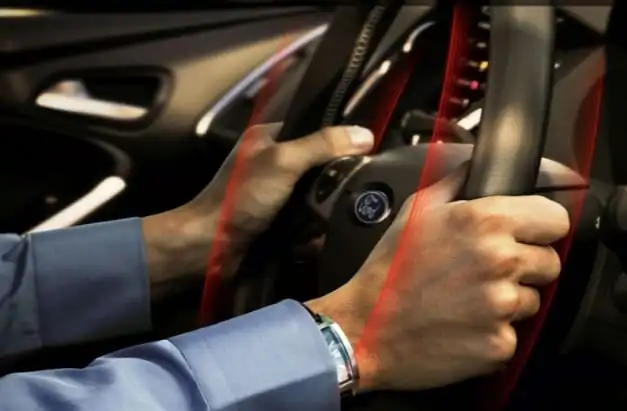
Steering wheel vibrations cannot be ignored. Otherwise, it is fraught with an accident. The steering wheel, like a litmus test, the first indicates a malfunction of the machine control system. Here are common causes for this problem.
- Wheel imbalance. Balancing is needed so that each wheel rotates smoothly, without shifting the center of gravity. Usually this problem is felt on a flat road and at high speed.
- Custom wheel size. When a motorist picks up new wheels, it is imperative to pay attention to the bolt pattern. For example, a value of 4x98 indicates 4 holes for bolts and the distance between their centers is 98 mm. Some believe that a couple of millimeters will not affect the ride quality. In fact, to put the disk, you will need to tighten the bolts with an inclination. As a result, the wheel is installed with an offset. And at high speed, the shaking becomes stronger.

- Worn shock absorbers or struts. The impaired smoothness of the shock absorber is also transmitted to the steering wheel. Old suspension elements become more rigid. Therefore, every unevenness feels like a big hole.
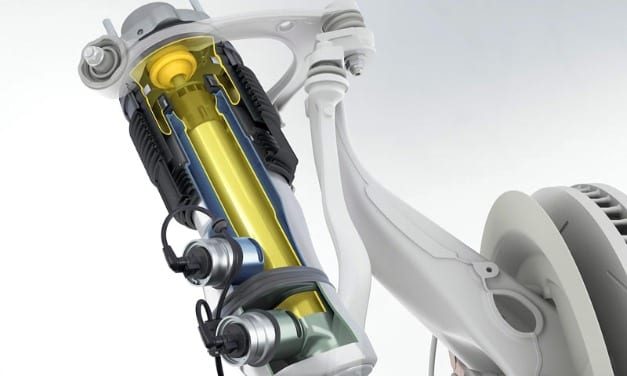
- The support bearing is out of order. Due to the poor quality of the road surface, this suspension element quickly fails. If you do not make its timely replacement, it will adversely affect the health of the entire depreciation system of the car.
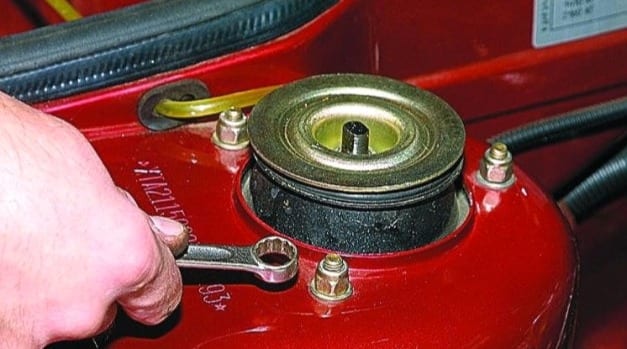
- Faulty ball joints. Most often, they become unusable due to the operation of the vehicle on poor roads. Therefore, in the territory of the former Soviet Union, the ball must be changed more often.
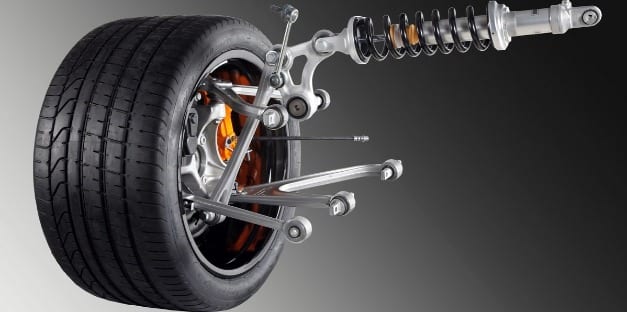
- Tips of steering draft. If even a slight backlash appears when turning the steering wheel, it is necessary to replace the tie rod ends. They provide parallel rotation of the front wheels. At high speeds, worn-out tips experience a lot of stress due to the uneven arrangement of the wheels.
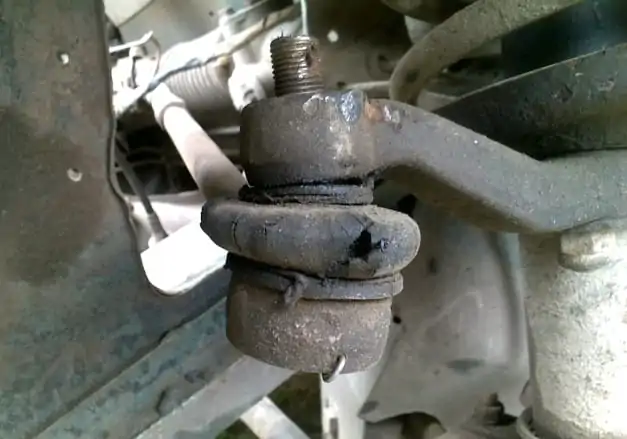
Here is another reason for steering wheel vibration:
The car is shaking at idle
If the machine vibrates at idle, then the problem must be sought in the fastening elements of the engine. To eliminate it, it is worth paying attention to the following possible reasons.
- Deterioration of a support of the engine. During operation of the power unit, vibration is compensated by the rubber pillows of the support. Not necessarily the problem will be that this part is torn. Over time, the rubber elements become rougher. Therefore, they need periodic replacement.
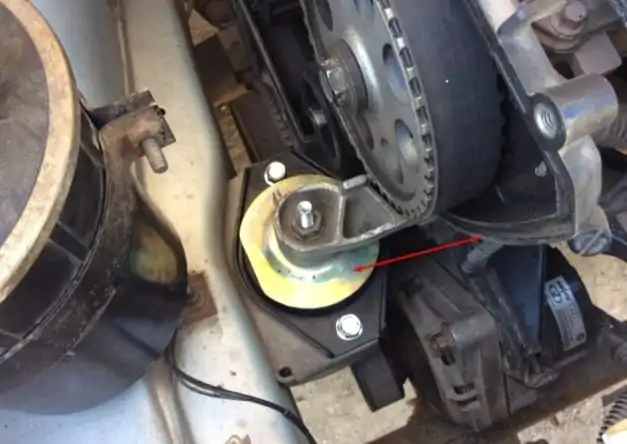

- Motor malfunction. Idling of the piston group should occur as smoothly as possible. If this does not happen, you need to take the car to the minder. Among the causes of a violation of smoothness are clamped valves, or wear on the piston rings.
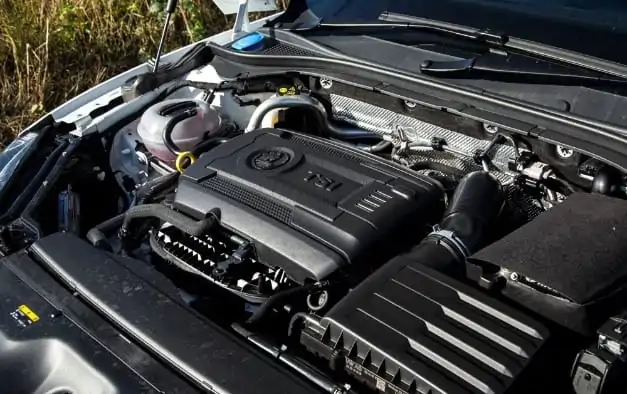

- The problem with the fuel system. A clogged fuel system leads to an uneven engine operation. If the engine idles, then it picks up, then it slows down, it is worth checking the entire trunk. Stabilize the engine can replace the fuel filter or repair the pump.
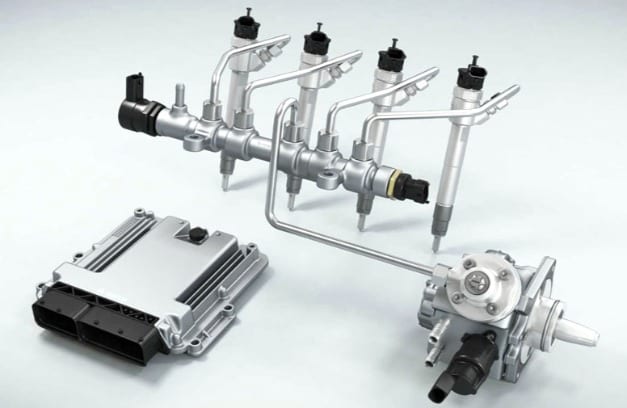

To diagnose malfunctions in atmospheric internal combustion engines, you can use the recommendations of Nail Poroshin:


Watch this video on YouTube
Car shakes during acceleration
In addition to the listed malfunctions, shaking during acceleration can be explained by a transmission malfunction. Here are three common shaking problems.
- The oil level in the box. A low level of transmission grease leads to failures in the acceleration of a car. Usually this problem is accompanied by the noise of gears rubbing against each other.
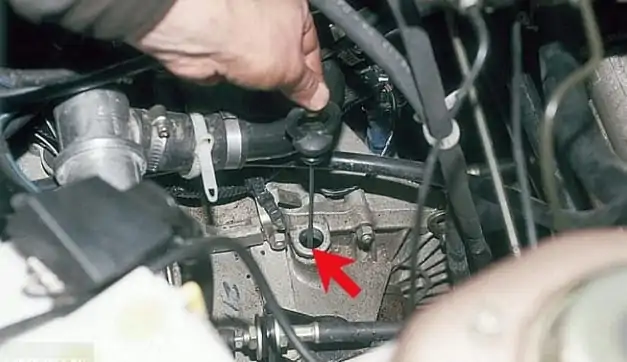

- Auto box filter. A clogged filter element reduces grease circulation in the automatic transmission. Because of this, sensations characteristic of a low level of transmission fluid appear.
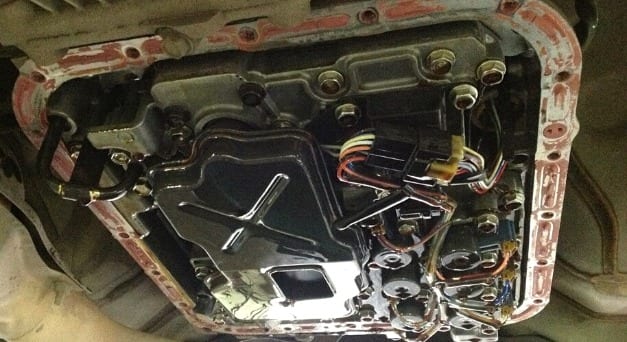

- Gimbal joint malfunction. In the nodes connecting the shafts at an angle, a hinge of unequal angular velocities is installed. Even slight backlash of the moving parts of the part leads to vibration at speed.
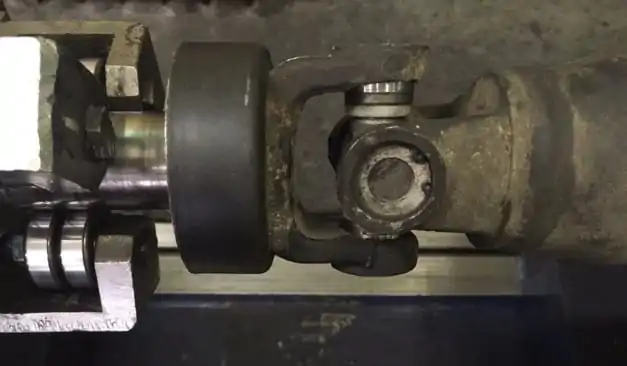

Vibration at speed
In addition to discomfort, vibration signals some malfunctions or faults in the installation of some parts as a result of the last repair. The consequences of vibration driving depend on which component is causing this effect, and is it the result of breakage or the result of gradual wear of parts. For example, the universal joint of the propeller shaft of some car models, when worn, creates vibration, which gradually increases.
To find out why vibration appears in the car, you can go to computer diagnostics. But this procedure does not always allow you to find out the true cause. We have compiled some general recommendations of experienced motorists, thanks to which you can find the source of vibration without expensive diagnostic procedures.
Consider each of the symptoms that appear at a particular vehicle speed.
0 km / h (idle)
The reason for vibration in this mode of operation of the vehicle may be:
- The gearshift lever vibrates, the cause of which may be a misfire or triplet internal combustion engine (why this happens, read in another review);
- The vibration is accompanied by a steady metallic thump. The reason is the wear of the motor cushions;
- In addition to vibration, a high-frequency whistle is heard from the engine compartment, especially in wet weather. The reason for this effect is the slippage of the alternator drive belt;
- The machine shakes a little evenly - there is an imbalance in the flywheel or clutch basket;
- If the vibration is uneven and intermittent, then this may be a consequence of a misfire, malfunctions in the fuel system or in the air supply, as well as malfunctions in the engine control unit.
0 km / h (increased revs)
If the vibration frequency also increases with increasing speed, then this may indicate a malfunction in the ignition system (the air-fuel mixture does not always ignite). You should also check the serviceability of the fuel system, the operability of the control unit (this will require computer diagnostics). Sometimes a similar effect occurs when the air filter is clogged or the air supply system is faulty.
Up to 40 km / h
In front-wheel drive cars, the crunch when turning the steering wheels indicates the failure of the "grenade" or CV joint. Also, any unnatural sounds coming from the steering wheels during maneuvering can be a signal of a breakdown of the steering mechanism, especially if it is accompanied by difficult turning of the steering wheel.
When vibration during movement appears after engaging a particular gear, this indicates a problem in the transmission. If vibration occurs at the moment the gear is engaged (applies to a car with a mechanical or robotic transmission), and is also accompanied by a short crunch, then you should pay attention to the release bearing or to the clutch basket clutches.
40-60 km / h
Usually, at this speed, a malfunction of the propeller shaft begins to appear in rear-wheel drive cars (for how to repair or replace this unit in a car, read in another article), its crosspiece or outboard bearing.
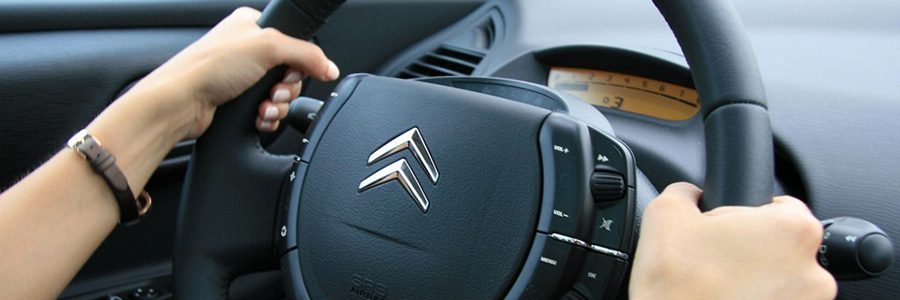

The second thing you need to pay attention to is the unreliable fixation of the exhaust system. Also, a failed strut bearing can give some vibration at low speeds (for more details about the support bearing, read here).
60-80 km / h
At these speeds, the braking system may malfunction. This malfunction will be accompanied by a characteristic sound. Additionally, you need to pay attention to tread wear (in another review read about what problems this or that type of tire wear indicates).
Another reason for the appearance of vibrations at such a speed of the car is the imbalance of one of the rotating parts of the motor. A similar effect is also observed when the oil level in the automatic transmission crankcase is low or if the transmission oil filter is clogged.
80-100 km / h
In addition to the previously mentioned causes, vibration in a car accelerated to this speed can cause minor wear on suspension parts such as ball joints.
100-120 km / h
If the engine is turbocharged, then the runout at this speed may be due to the fact that the turbine is not working correctly. The power unit does not receive the required amount of air, and therefore “chokes” on excess fuel. Vibrations in the vehicle interior may be due to the fact that some of the plastic panels have shifted and rattled.
More than 120 km / h
In order for vibration to form at such speeds, even slight deviations of aerodynamic properties from the norm are sufficient. To eliminate this effect, just install a spoiler. This will provide additional downforce to the vehicle. Read more about aerodynamics in another article.
Also, vibration at limiting speeds can be caused by the maximum torsional load of bearings that are not receiving sufficient lubrication.
Can you ride with body vibration?
For some motorists, stable vibration in a car is so natural that they get used to it and eventually stop noticing it. But if a similar effect occurs in a car abruptly, you need to immediately look for its cause. Otherwise, the driver runs the risk of an accident due to a breakdown of the suspension, chassis or transmission.
You cannot continue driving at high speed, even with the slightest vibration. In addition to discomfort, this effect can provoke other breakdowns of adjacent units and mechanisms of the car. Minor problems can be ignored and more costly repairs can be caused.
In most cases, vibration elimination can be performed at any workshop, and it is not an expensive procedure. It will be much more expensive to repair the damage caused by high frequency beating.
Methods of dealing with this phenomenon
To eliminate any wobbling, regardless of the speed of the vehicle, it is necessary to ensure that all parts of the body and interior, as well as the power unit, are securely fixed.
If, as a result of visual diagnostics, malfunctions of the damper elements of the gearbox, suspension or power unit were detected, then it is necessary to carry out computer diagnostics and eliminate the malfunctions.
To prevent wobbling and any similar uncomfortable effects, every driver must comply with a routine maintenance schedule for the vehicle. If vibrations are a natural companion of a particular car model, then this effect can be minimized by using noise insulation materials.
An example of how to diagnose a transmission and chassis malfunction:


Watch this video on YouTube
As you can see, various malfunctions can cause vibration in the car. Therefore, it is extremely important to carry out the necessary maintenance of the machine on time. Replacing worn parts will not only eliminate discomfort during the trip, but also prevent an emergency.
Frequently asked questions and answers:
Shakes the car when driving at low speed. If the car moves in a straight line, and vibration appears when a certain speed is turned on, then this is a sign of a gearbox output. When the clutch is depressed, twitching indicates wear on the release bearing or clutch basket friction elements. Vibrations during cornering indicate a steering problem. When the wheels are inverted (the car enters a turn), vibration and crunching indicates the failure of the SHRUS. If the car is equipped with a propeller shaft, then shaking when picking up speed can also be a symptom of a problem with this part of the transmission.
The car shakes from side to side. As the suspension struts wear out, the car will wobble from side to side on every bump. Along the way, you should check the serviceability of the support bearing. If the wheels of the car have been balanced for a long time, this can also be the reason for the shaking of the car to the sides. If this continues for a long time, uneven wear will appear on the tires sooner or later, and the chassis and suspension will begin to crumble.
7 comments
Google translate
It seems that it was translated with Google translate. Nothing is understood.
Jennifer
My 4 suzuki sx2008 car when I accelerate that I go from 20 to 40 miles I feel the car wobble which could be if you could help me
Dawid
Hello. I have a problem. Audi a4 b7 1.8 t
When it accelerates the most in 3rd gear, you can feel the car vibrating. When the gas is released, it stops. The articulation on the driver's side was replaced, but it did not help. What could be a possible cause?
Fakhri
My Subaru forester will feel a strong vibrate on the front wheels every time I drive on the highway at speeds of 90km and above. Vibrate the terrace every time you take a turn. Please help
Ljibomir
Hello, my Citroen C5 2.0 hdi 2003 station wagon after 50-60km gets vibration (left-right) at a speed of about 120km / h and continues with acceleration. If I release the accelerator pedal, the vibration disappears, and also if I release it from the speed, the vibration disappears. The master cannot find out what the fault is, so I ask you for help
Cubi
My Mercedes e300 has a small vibration for 10 seconds only in the middle when it is turned on while driving.
Mohammad Zahirul Islam Majumder
I drive hybrid prius 2017. Few days ago I swapped front and rear wheels only. Now when I go above 90 km the vibration is felt. What to do now?